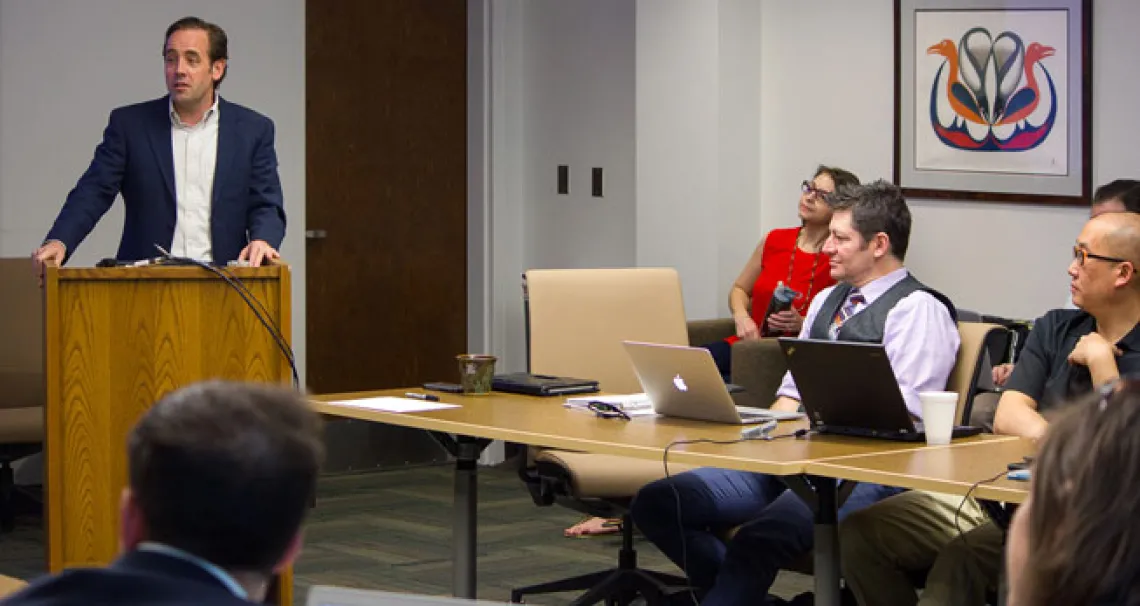Big Data Takes Center Stage at 2016 UA QuantLaw Conference

In the age of Big Data, it has become increasingly critical to apply quantitative principles to law and policy challenges. And so, during a warmer than usual winter weekend Feb. 12-13 in Tucson, the University of Arizona College of Law assembled some of the best legal, policy, and statistical scholars who are helping fuse law with data analytics for the third annual QuantLaw conference. The event also welcomed junior scholars from PhD and fellowship programs.
Quantitative Law, or QuantLaw, applies statistical findings to legal problems to generate new insights and drive smarter policy.
Saul Levmore, from the University of Chicago, gave the day-one keynote address on the provocative question, “When is Empirical Work Influential?” Dan Klerman (USC) challenged attendees to think about how parties select which suits to settle, and whether we can infer anything about data from litigated cases alone.
David Burnham, former New York Times reporter, and Sue Long, professor of managerial statistics at Syracuse University, spoke about the treasure-trove of data that is the Transactional Records Access Clearinghouse (TRAC). Among other things, TRAC has revealed the scandal that judges who are randomly assigned virtually identical cases have wildly different patterns of decisions—some grant 85 percent of petitions, while others grant only 15 percent of the same sort of petitions.
Other presenters covered topics such as:
- Patterns in the Environmental Protection Agency’s decisions
- A study of infant mortality in the Yaqui pueblos of Mexico
- Analysis of the 18,000 federal employees with judicial powers
- Balkanization as a testable Supreme Court doctrine
- Political polarization in the National Labor Relations Board
- ADA employment discrimination decisions
- How to identify irrational jurors
- Diversity among Arizona’s judges
- The efficacy of body cameras for Washington, D.C. police officers
“UA’s QuantLaw conference is a great opportunity for junior scholars around the country to get feedback on their cutting edge research from peers and leaders in the field,” said Christopher Robertson, professor of law and associate dean for research and innovation. “Along with Dean Marc Miller—whose pathbreaking work on prosecutorial decisions has shaped the debate in that field, Professors Kathie Barnes, Jane Bambauer, Simone Sepe, and I believe that much can be learned by a data-driven approach to the law. With these tools, Professors Sergio Puig and Jason Kreag are taking their fields of expertise in new directions, and clinicians Paul Bennet and James Hopkins are bringing data to their work as well.”
In total, the conference hosted presenters and discussants from nine universities and from five different UA colleges. Demonstrating the broad reach of QuantLaw, presenters brought training from psychology, history, political science, journalism, statistics, public health, economics, and basketball coaching.
